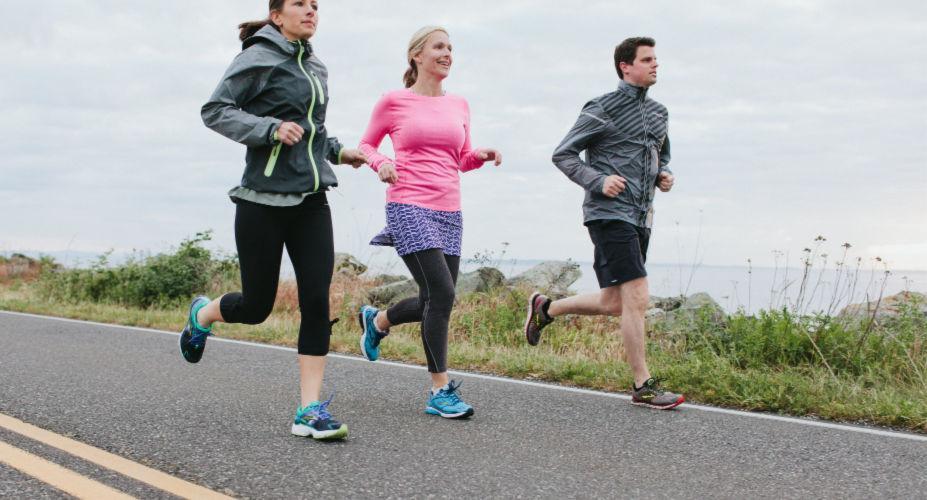
Written By: Paul Langer, DPM — Superfeet Wellness Panel Member. Paul Langer is a sports medicine podiatrist who treats athletes of all abilities at Twin Cities Orthopedics in Minneapolis, Minnesota. He is the author of Great Feet For Life and lectures internationally on the topics of lower extremity health and footwear.
Shin splints, or Medial Tibial Stress Syndrome (MTSS), as it is referred to in the medical literature, is an overuse injury of the lower leg that commonly affects runners and other athletes especially as they increase their training load. Shin splints can be notoriously difficult to treat and athletes can lose between 44 and 78 days of training due to injury. It can be an epidemic in spring for high school track athletes who often jump into a run training program with little transition from the off-season or from another sport. The high impact, repetitious nature of running places significant stresses on the lower extremity which can contribute to this injury.
MTSS is still poorly understood but involves the shin bone (tibia), the membrane that attaches soft tissue to the bone and the muscles and tendons as well. Any or all of these structures may become stressed or overloaded and contribute to injury. Pain is felt to the medial (inside) aspect of the lower leg along the course of the tibia between the knee and ankle.
Other than training errors such as the “terrible too’s” – too much running, too rapid increase in mileage/speed and/or too little rest – the research does not reveal obvious predictable causes which means that there are not always predictable treatments or prevention strategies.
Common Risk Factors for Shin Splints
The cause of shin splints has many factors. Some studies link lower extremity weakness, poor flexibility and/or hypermobility as contributing factors. There is speculation that impact forces as well as torsional forces contribute for some. A recent review of the scientific literature revealed some areas that may be important to focus on.
The researchers pooled the data from 22 studies that looked at 27 risk factors for MTSS. They found five of the 27 risk factors showed statistical significance while the others did not.
The five highest risk factors for developing MTSS according to this study were:
1. Being female
2. Having a higher weight
3. Having higher navicular drop
4. Having had a previous running injury
5. Having greater hip external rotation with knee flexed
Of the five risk factors, let’s examine numbers 3 and 5 — high navicular drop and greater hip external rotation. It is important to understand that these conditions should be assessed by an experienced medical professional and then treated under their guidance.
High Navicular Drop as a Risk Factor for Shin Splints
Navicular drop is a measurement of foot mobility that is a method of assessing foot pronation. This study showed that a higher amount of foot pronation was a risk factor for MTSS. This may be due to the increased mobility and hence less stability of the foot during loading which can alter the dynamic stability of the lower leg. Some individuals with higher navicular drop may benefit from more stable shoes and firm insoles as well as from foot and lower leg strengthening exercises.
Soft, flexible shoes can increase navicular drop while stability shoes with dual density midsoles and/or firm insoles can minimize navicular drop.
Exercises should include strengthening the small intrinsic foot muscles as well as the larger muscles of the lower legs such as the Gastro soleus complex, the peroneal muscles and the posterior tibial muscle.
Greater Hip External Rotation as a Risk Factor for Shin Splints
Having greater hip external rotation was also identified as a risk but the researchers are less sure of why this might be a factor. There is speculation that this is an indicator of hypermobility/instability or contributes to less than optimal motor control of the leg which can cause overloading of the shin.
For those with this risk factor, strengthening programs that focus on the core muscles – the gluteals, the hamstrings, the piriformis and others are important.
Other Tips for Prevention and Relief from Shin Splints
• It is important to prepare for any increase in running mileage or training intensity to prevent any injury, whether it is MTSS or others.
• Do not ignore early signs of pain in the shin. The longer you wait to treat it, the harder it will be to resolve.
• Icing, NSAID’s and compression with tape or compression stockings may help reduce inflammation and pain early on.
• Occasionally, temporary footwear and running form changes can help reduce pain.
• Running with a slightly wider base of gait (approximately 2 inches should suffice which is about the width of the lane stripes on a track) can decrease some of the bending forces on the tibia.
• Running on natural surfaces such as grass or dirt trails can introduce some variability that may be helpful for others.






